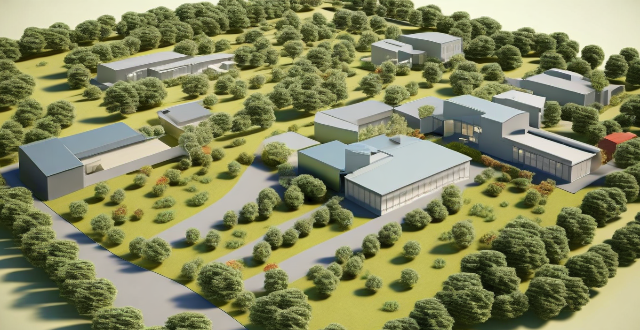Ecological design is a sustainable approach to architecture and engineering that aims to minimize environmental impact. It promotes the use of renewable energy, sustainable materials, and energy-efficient technologies, leading to reduced carbon footprint and conservation of natural resources. Economic benefits include cost savings, increased property value, and job creation. Socially, it fosters healthier living environments, community engagement, and educational opportunities. Ecological design also adapts to climate change by incorporating resilient infrastructure and water management systems. Finally, it promotes innovation through technological advancements, cross-disciplinary collaboration, and research opportunities.

Ecological Design: A Sustainable Approach to Architecture and Engineering
Ecological design is a holistic approach to architecture, engineering, and urban planning that aims to minimize the negative impact of human activities on the environment. It involves creating structures and spaces that are in harmony with nature, using sustainable materials, and promoting energy efficiency and resource conservation.
Why is Ecological Design Important?
1. Environmental Sustainability
- Reduced Carbon Footprint: Ecological design reduces the carbon footprint of buildings by using renewable energy sources and energy-efficient technologies.
- Conservation of Natural Resources: It promotes the use of sustainable materials, reducing the depletion of natural resources.
- Biodiversity Preservation: Ecological design helps preserve biodiversity by integrating green spaces into urban areas.
2. Economic Benefits
- Cost Savings: Energy-efficient designs can lead to significant cost savings in utility bills over time.
- Increased Property Value: Sustainable homes and buildings often have higher property values due to their energy efficiency and eco-friendly features.
- Job Creation: The growth of the green building industry creates new job opportunities in various sectors.
3. Social Responsibility
- Healthier Living Environments: Ecological design improves indoor air quality, leading to better health outcomes for occupants.
- Community Engagement: Engaging communities in the design process fosters a sense of ownership and pride in local environments.
- Educational Opportunities: Green buildings serve as educational tools, raising awareness about sustainability and environmental issues.
4. Adaptation to Climate Change
- Resilient Infrastructure: Ecological design incorporates strategies to adapt to changing climate conditions, such as flood-resistant construction methods.
- Heat Island Effect Mitigation: Green roofs and other eco-friendly features help reduce the heat island effect in urban areas.
- Water Management: Sustainable water management systems, like rainwater harvesting, ensure a reliable water supply during droughts.
5. Promotion of Innovation
- Technological Advancements: The demand for ecological design drives innovation in clean technology and construction techniques.
- Cross-Disciplinary Collaboration: Ecological design requires collaboration between architects, engineers, scientists, and community members, fostering interdisciplinary dialogue.
- Research Opportunities: The field provides numerous opportunities for research into sustainable materials, energy systems, and environmental impact assessments.
In conclusion, ecological design is not only crucial for protecting the planet but also offers numerous economic, social, and health benefits. By adopting this approach, we can create more livable, resilient, and equitable communities while preserving our natural world for future generations.